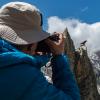Does the S1 produce sharper images than the S1R?
-
Recently Browsing 0 members
- No registered users viewing this page.
-
Similar Content
-
- 5 replies
- 405 views
-
- 3 replies
- 401 views
-
- 7 replies
- 1,844 views
-
- 10 replies
- 957 views
-
- 52 replies
- 8,924 views
-

.thumb.jpg.a8c0eceb5c93f775e75e8b4465e4cf9c.jpg)



Recommended Posts
Join the conversation
You can post now and register later. If you have an account, sign in now to post with your account.
Note: Your post will require moderator approval before it will be visible.